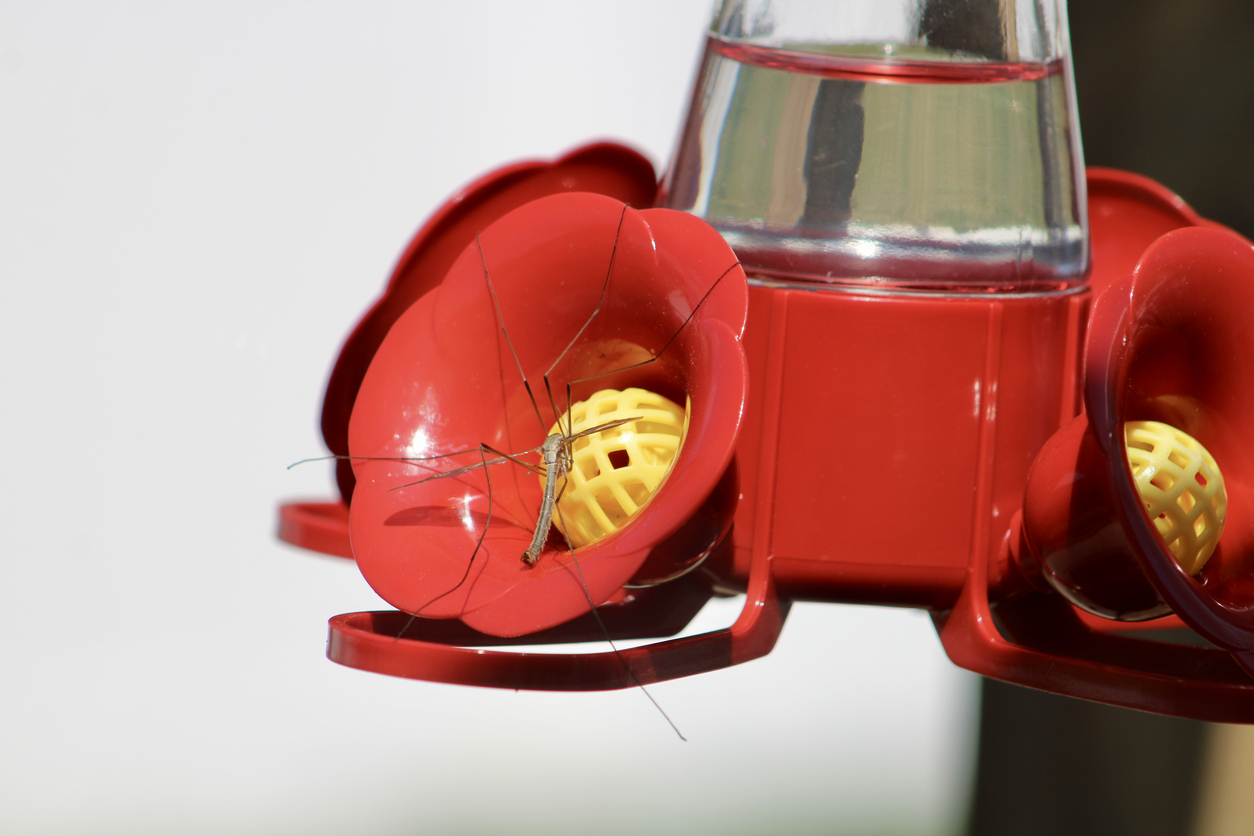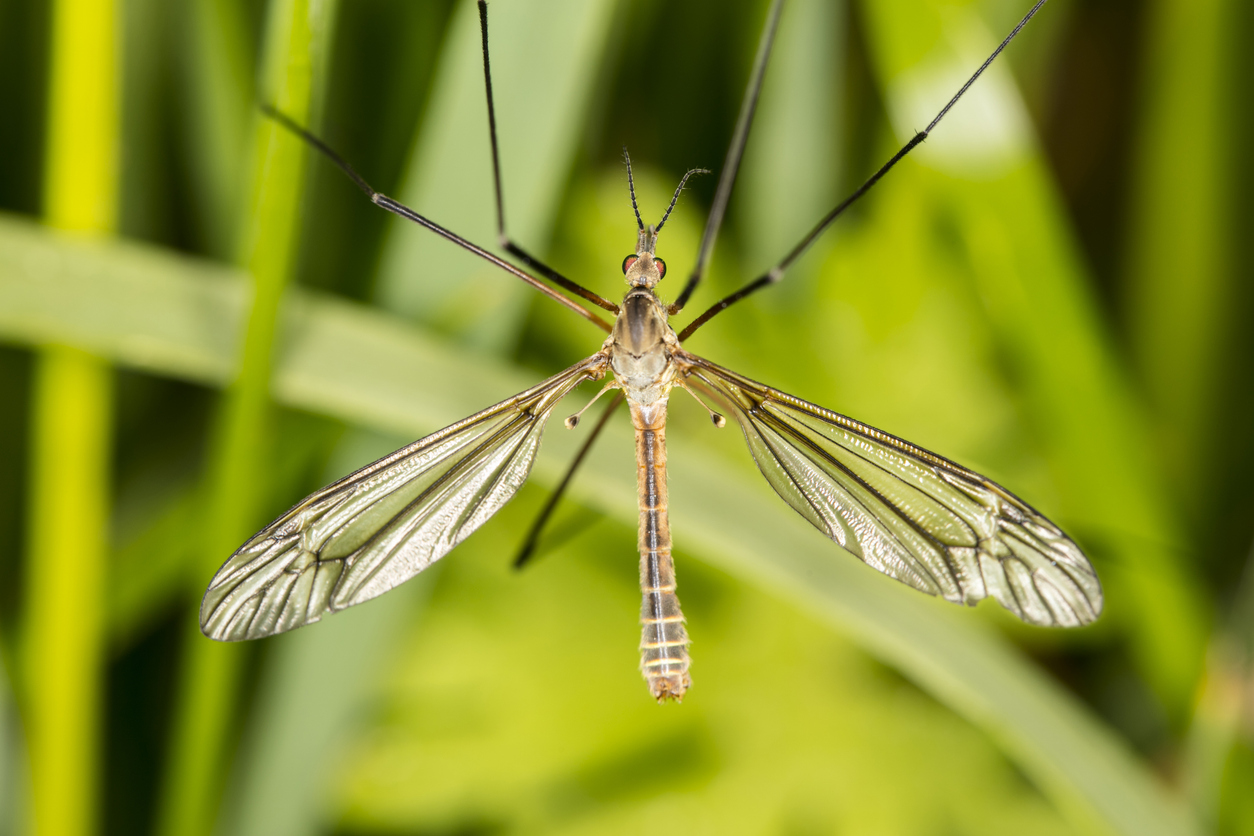Crane Flies: Massive Mosquitoes or Friendly Fliers?
If you come across what looks like a giant mosquito this summer, don’t bug out! These massive flying insects are called crane flies. Although they are often mistaken for mosquitoes, they aren’t actually out to get your blood. Learn more about these feeble flyers and how to identify them.
What are Crane Flies?
At a first glance, these large flying insects appear very similar to a mosquito, with long, spindly legs, slender bodies, and thin wings. While crane flies are related to mosquitoes, as they both are true flies belonging to the Diptera order, they live two very different lifestyles.
Not Quite a Mosquito’s Mirror Image
Size is the easiest way to recognize the difference between a peaceful crane fly and a pesky mosquito. Crane flies are much larger than their mosquito cousins, with legs that are up to 4 inches long. Mosquitoes have short, thin legs that are only millimeters in length. Color is another helpful indicator for differentiating mosquitoes and crane flies, as the former are typically black or gray, and the latter are tan or brown.
Harmless to Humans
Despite their intimidating size, crane flies are gentle giants. They don’t pose any risk to humans — or any other animals for that matter — as they don’t sting or bite. Many adult crane flies don’t even have any mouthparts. There’s no time to eat when their only mission is to reproduce! Additionally, while mosquitoes can carry unpleasant diseases like malaria, yellow fever, dengue, West Nile virus, and Zika, crane flies don’t carry diseases at all. No need to fear the fellow crane fly!

Liquid Diet
The myth that crane flies eat mosquitoes is simply that: a myth. The majority of adult crane flies don’t eat at all, relying solely on fat reserves from their larval stage to fuel them. If they do fancy a snack, they will drink nectar or water. Crane fly larvae feed on decaying vegetation, including leaves, grass, and roots. Their diet is very different from mosquitoes, who feast on blood to survive.
Crane Fly Season
You’re most likely to encounter crane flies in late summer, early fall, and the beginning of spring. They love warm weather and damp environments, making these seasons ideal for them to thrive, reproduce, and lay their eggs. Typically, crane flies try to get a head start on their lives before more predators begin to emerge, since they aren’t the strongest fliers and have fragile bodies.

Short-Lived Subsistence
If you’ve seen a crane fly recently, you’re unlikely to get a visit from the same one in just a week. Crane flies enjoy a short lifespan, generally only up to three days as an adult. However, you wouldn’t want to have a toughness contest with crane fly larvae. They are well-equipped to survive harsh outdoor conditions due to their tough outer skin, giving them the nickname of “leatherbacks.” These larvae can survive anywhere from a week up to three years long.
Settling Down in the Stream
Crane flies are happy to make their home in a range of wet habitats, favoring ponds, marshes, rivers, and streams. Some crane flies prefer living in the water itself. Others prefer to cozy up in the moist soil, sand, or decaying organic matter near the water. While crane flies flourish outside, they can accidentally end up invading your indoor space since they’re attracted to light. Ensure your window screens don't have any holes or tears to keep these flying insects outside.

Food Chain Contribution
Crane flies have a humble role to play when it comes to the ecosystem. Since they feed on decaying organic matter as larvae, they are essential to the decomposition process. Additionally, crane flies serve as an important food source for a variety of animals, including birds, bats, lizards, spiders, predatory beetles, and praying mantises.
Keeping Crane Flies in Check
Still feeling cautious about crane flies? Contact us today for easy and swift treatment of these massive mosquito mimics.






 YouTube
YouTube Facebook
Facebook Twitter
Twitter Instagram
Instagram